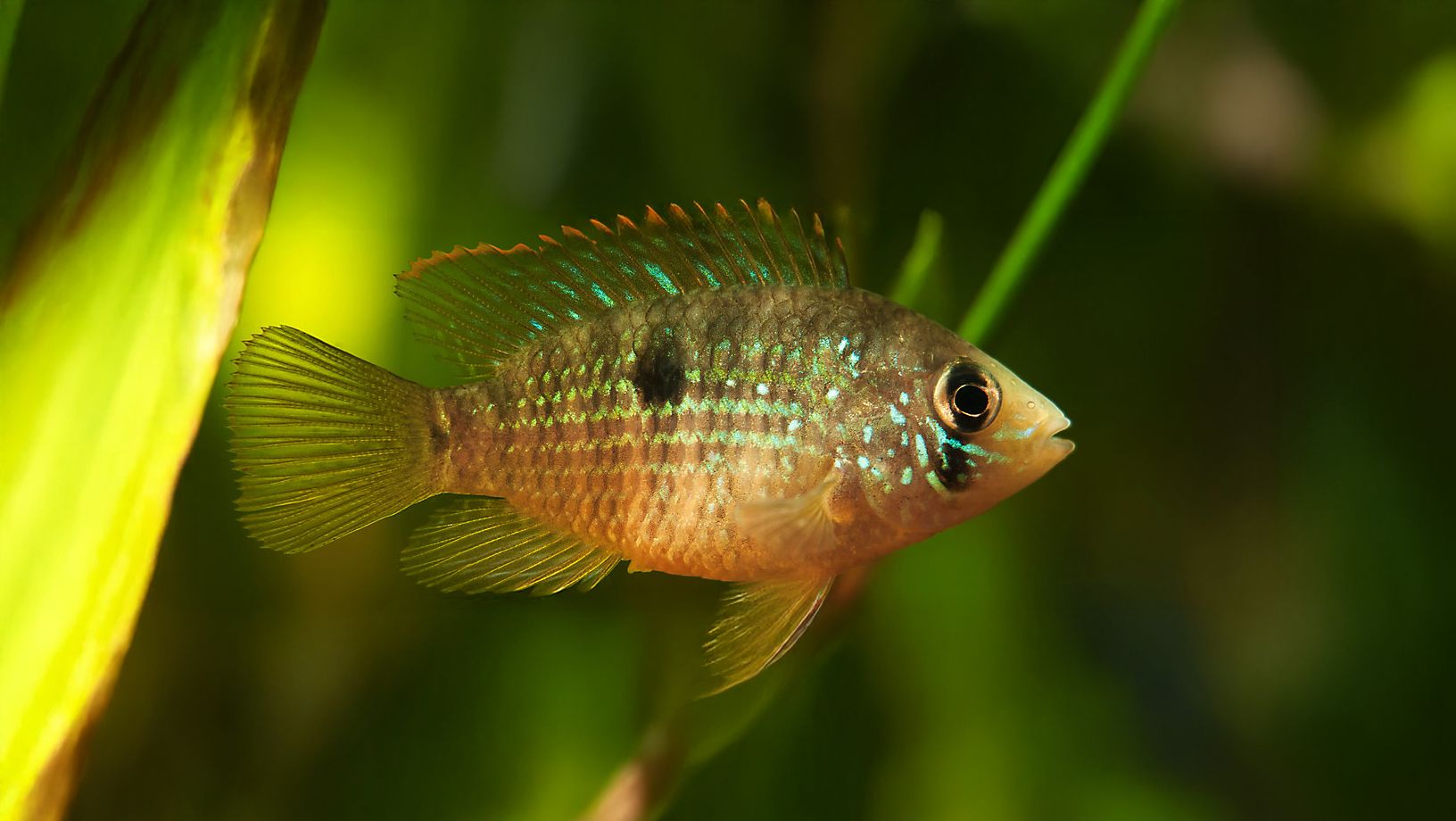Semi-Aggressive Fish Care Guide

In this Article
2 things to know about semi-aggressive fish
- Species: large gourami and catfish, algae eater, loach, and others.
- Behavior: Semi-aggressive species can coexist with others of the same size and temperament, but may eat smaller fish
Set up the aquarium at least one day before you add any fish.
Aquarium & stand
- Choose a 20-gallon or larger aquarium for species that grow up to 6 inches (15 cm) long; a 29-gallon or larger aquarium for those that grow up to 10 inches (25 cm); a 55-gallon or larger aquarium for species that grow up to 20 inches (51 cm), and a 75-gallon or larger aquarium for those over 20 inches (51 cm).
- The aquarium should be near a power source in a low-traffic area, away from direct sunlight and drafts.
- Water weighs 8 pounds per gallon. Pick a very sturdy, stable base for your aquarium before filling it.
What do I put in my aquarium?
- If you will be using an undergravel filter, add it first. Then layer about 3 inches (8 cm) of gravel on the bottom of the tank (about 1½ pounds of gravel per gallon of water). Rinse the gravel before putting it in the aquarium.
- Fill the tank about halfway up with dechlorinated water and add bacteria supplements to the water to promote biological-waste breakdown.
- Add the thermometer and other necessary equipment.
- Time to decorate! Add fish furniture, rocks and plants. Rinse all décor before adding it to the tank.
- Finish by filling the tank the rest of the way with dechlorinated water
- Maintain a healthy environment for your fish by testing the water frequently and changing 10% of the water weekly. If you are unsure about the health of the water, bring a sample to PetSmart for free testing.
Filtration
- Follow the manufacturer’s instructions for choosing and setting up the filter.
- An aquarium filter should be able to process all of the water in the tank 3 to 5 times an hour. For example, the filter in a 20-gallon tank would need to treat at least 60 gallons of water each hour.
Heat & light
- In order to thrive in the same tank, the semi-aggressive fish you choose must be suited to the same basic environment. If the fish are tropical species, they’ll require water temperatures ranging between 73 and 82 degrees Fahrenheit.
- Choose an aquarium heater with 5 watts of power for each gallon of water in the aquarium. A large aquarium may need a heater at each end.
- Wait 15 minutes after filling the tank before turning on the heater.
- Place the heater close enough to the filter to distribute the warmed water.
- Run the tank’s filter and the tank’s hood light for 24 hours, then check the water temperature and adjust the heater if necessary.
- The aquarium light should be on for 8 to 12 hours a day. Turn it on for the morning feeding and off after the evening feeding.
What do semi-aggressive fish eat?
Feed your fish flakes or pelleted food twice daily. Use appropriately sized pellets, and only use as much food as the fish can consume in 3 minutes. Some semi-aggressive fish need vegetable matter in their diet – feed these species algae discs or spirulina pellets as well. Supplement their diet with frozen or freeze-dried brine shrimp or bloodworms.
How can I keep my semi-aggressive fish healthy?
Even after they are settled in, fish can get sick. Contact a veterinarian or a PetSmart store associate if you notice any of the following signs
- Unusual swimming pattern
- Thinness or decreased appetite
- Abdominal swelling
- Inflamed or discolored skin or fins
- Fins clamped to sides of body
- Scraping body on rocks (flashing)
PET SAFETY TIPS
- Thoroughly wash and rinse your hands before contact with your aquarium.
- Always add a dechlorinator or water conditioner to tap water before putting the water into the aquarium.
- Soap and detergent are toxic to fish. Do not use these products to clean the aquarium or décor.
- Use caution when moving fish.
- Supervise children around the aquarium
- All animals can carry viral, bacterial, fungal, and parasitic diseases that are contagious to humans. Thoroughly wash your hands with warm, soapy water after contact with any pet, its habitat, or aquarium water, and after cleaning the aquarium. Adults should assist children with hand washing.
VET ASSURED™
Pets purchased at PetSmart are part of our exclusive Vet Assured™ program, designed by PetSmart veterinarians to help improve the health and well being of our pets.
Our vendors meet a high standard in caring for pets and screening them for common illnesses. This program also includes specific standards for in-store pet care.
PETSMART PROMISE
If your pet becomes ill during the initial 14-day period, or if you’re not satisfied for any reason, PetSmart will gladly replace the pet or refund the purchase price.

